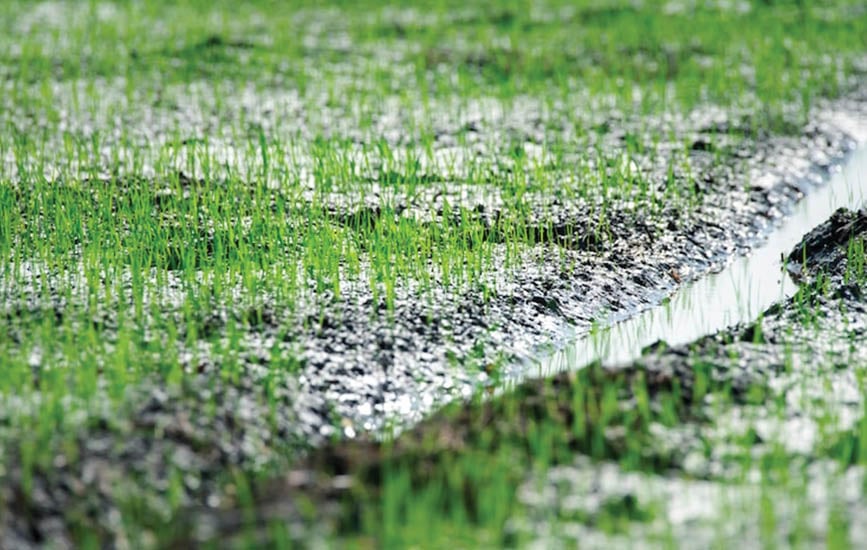 |
Let’s be real, if you’re like most homeowners, you want your yard to look great, but you don’t want to spend every weekend babysitting your lawn. Between work, errands, family time, and maybe even a little “me time,” who’s got hours to mow, water, weed, and reseed?
If that sounds like you, then you’re in the right place. I’ve got the scoop on the best low-maintenance grass types that’ll keep your yard looking green and gorgeous without eating up your free time. We're talking less mowing, less watering, and less stressing because your lawn should work for you, not the other way around.
Let’s dive in. |
| Why Low-Maintenance Grass Matters |
You might be wondering, “Is there really a difference between one type of grass and another?” Oh yes, friend. It’s like comparing a cactus to a rose bush. Both have their charm, but one is clearly easier to deal with.
Low-maintenance grasses grow slower, need less water, and are more resistant to pests and disease. That means you spend less time behind a lawnmower or dragging a hose around the yard. It also means less money spent on fertilizers, herbicides, and yard guys.
So if you want a lawn that doesn’t suck the life out of your weekends, you’ll want to keep reading.
|
| 1. Bermudagrass – The Sun-Loving Champ |
| Best for Southern and warm climates |
| Bermudagrass is the golden child of hot weather lawns. It’s tough, fast-spreading, and thrives in the sunniest parts of your yard. This grass is a favorite for golf courses and sports fields so you know it can handle foot traffic like a champ.
|
| Why it’s low-maintenance: |
- Super drought-resistant
- Grows thick and crowd-outs weeds naturally
- Once established, it doesn’t need a lot of pampering
|
| Heads-up: It does go dormant and turns brown in the winter. But hey, it always comes back strong when it warms up again.
|
| 2. Zoysiagrass – The Ultimate Chill Lawn |
| Best for: Warm climates (but can handle a bit of cold too) |
| Zoysia is like that laid-back friend who just gets you. It’s not demanding, and it doesn’t freak out with a little neglect. It grows slowly (which means less mowing), and it forms a super dense turf that keeps weeds out and barefoot feet happy.
|
| Why it’s low-maintenance: |
- Slow growth = fewer trims
- Drought-tolerant
- Handles foot traffic and recovers well
|
| One catch: It takes a while to get going. Once it’s established, though, it’s one of the easiest grasses to live with.
|
| 3. Tall Fescue – The Cool-Weather Warrior |
| Best for: Cooler climates (like the Northern U.S.) |
| Tall fescue is the MVP for homeowners in chillier regions. It’s got deep roots, which makes it great at sucking up water and that means less irrigation on your end. It also stays green longer into fall and even tolerates some shade.
|
| Why it’s low-maintenance: |
- Grows well in poor soil
- Drought-tolerant
- Fewer diseases and pests to worry about
|
| Tall fescue does grow fast, so you might have to mow it more often than Zoysia or Bermuda. But overall, it’s a super forgiving grass.
|
| 4. Buffalograss – The Native Tough Guy |
| Best for: Midwest and dry climates |
| Buffalograss is native to the prairies of North America, which means it's literally built for survival. It doesn’t need a lot of water or mowing, and it’ll hold its own even when the sun’s beating down and the rain is MIA. |
| Why it’s low-maintenance: |
- Needs very little water once it’s settled in
- Rarely needs mowing (like 4–6 times a year!)
- Doesn’t demand fertilizers
|
| Downsides? It doesn’t love heavy foot traffic. So if your yard doubles as a football field for the neighborhood kids, you might want something hardier.
|
| 5. Centipedegrass – The "Plant and Forget It" Option
|
| Best for: Southeast U.S., acidic soil areas |
| Centipedegrass is sometimes called the “lazy man’s grass” and that’s not an insult. This grass is perfect if you don’t want to do much of anything. It spreads slowly, so you won’t need to mow a lot. It also requires little to no fertilization.
|
| Why it’s low-maintenance: |
- Doesn’t grow fast (so yay, less mowing!)
- Low fertilization needs
- Doesn’t get many pests or diseases
|
| It’s not super wear-resistant, though, so maybe skip this one if you’ve got a lot of backyard barbecues or soccer games.
|
| 6. Fine Fescue – The Shade-Lover’s Best Friend |
| Best for: Shaded or cool areas |
| If your yard is full of trees or shady corners, fine fescue might be your new best bud. It thrives in low light and doesn’t need much help from you to stay healthy.
|
| Why it’s low-maintenance:
|
- Requires little water
- Rarely needs fertilizer
- Grows slowly and doesn’t mind neglect
|
| The blades are super thin and soft, too kind of like grass with spa vibes. It might not handle a ton of activity, but for quiet lawns, it’s a dream.
|
| Quick Comparison Chart |